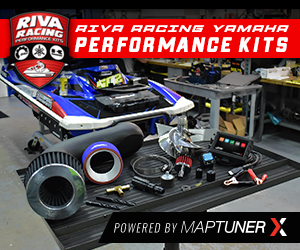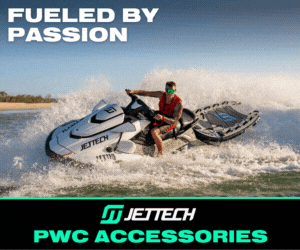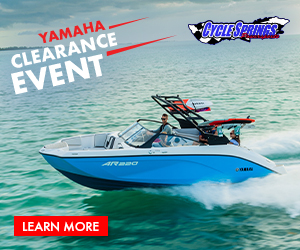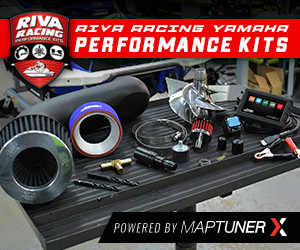“The days of 50 mph top speeds and ‘better lean to the outside or you’ll spin out’ handling are long gone in the personal watercraft market.” This is quote from Jeff Hemmel’s article in Boating Magazine proves to be true. Today’s performance watercraft flirt with 70 mph, have 0-to-60 times comparable with modern day sports cars, and turn on a dime with the aggressive lean of a superbike.
We at The Watercraft Journal wanted to give our take on Hemmel’s criteria only as the original story primarily focuses on Sea-Doo’s RXP-X 260. Wanting to be a wee bit more general want to define high performance skis by the following:
Hull design plays a major part in how a ski performs. A flatter hull, like the one used on the Yamaha FZ series, will be aimed more towards flat water speed and planing quickly. A deep-V hull, similar to the Kawasaki Ultra will cut right through the chop, as the exaggerated keel of the Sea-Doo RXP-X permits a narrow running plane.
Sponsons play a key role in giving a craft its handling characteristics. Yamaha and Kawasaki offer fixed sponsons. Currently, Sea-Doo is the only manufacturer to offer adjustable sponsons off the showroom floor. They are offered by aftermarket companies as well for all three manufacturers. Adjustable sponsons tailor a craft’s personality to the rider’s preferences for operation. Lower the trailing edge, or move it toward the stern for aggressive handling. Raising the sponson, or moving it forward, softens the response for a more playful ride.
Trim adjusts the nozzle, pivoting it down to lower the bow and put more of the hull in the water for sharp turns or pivoting it up to get more of the hull out of the water during straight-line, high-speed runs. Today’s PWC have large jet pumps with diameters of 155-to-160mm. These watercraft are making more than enough power to turn these big props. A large pump is essential to make sure you can keep the ski hooked up on takeoff with upwards of 310 horsepower.
The Big Displacement Engines of today’s performance craft are liquid-cooled and feature displacements ranging between 1,494 and 1,812cc’s. Kawasaki and Sea-Doo both use 1.5 liter engines in their flagship models, while Yamaha has the highest displacement of the three manufacturers with a 1.8 liter engine.
And finally, those big motors all benefit from superchargers. These “power adders” pack more air into the combustion chamber. More air (and more fuel) means a larger, more potent explosion. Superchargers are the big key to making as much power as these skis are making. Yamaha and Sea-Doo use direct driven centrifugal superchargers and Kawasaki uses a belt-driven roots supercharger.








